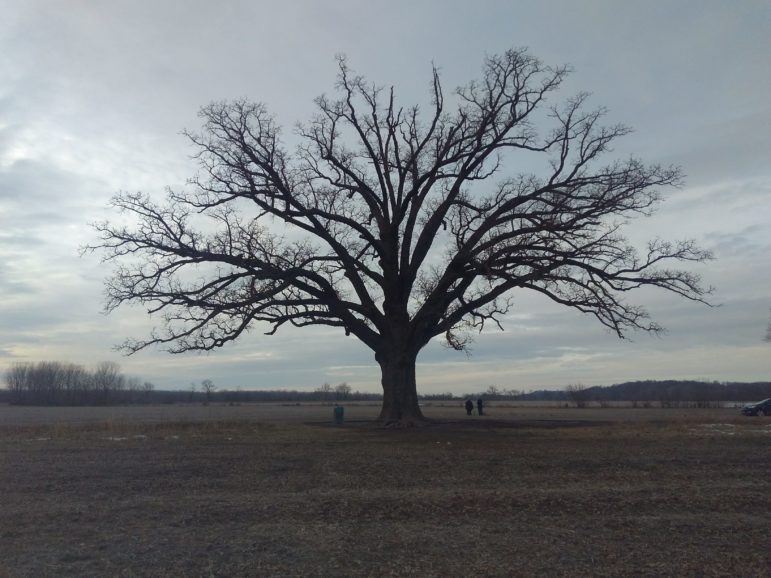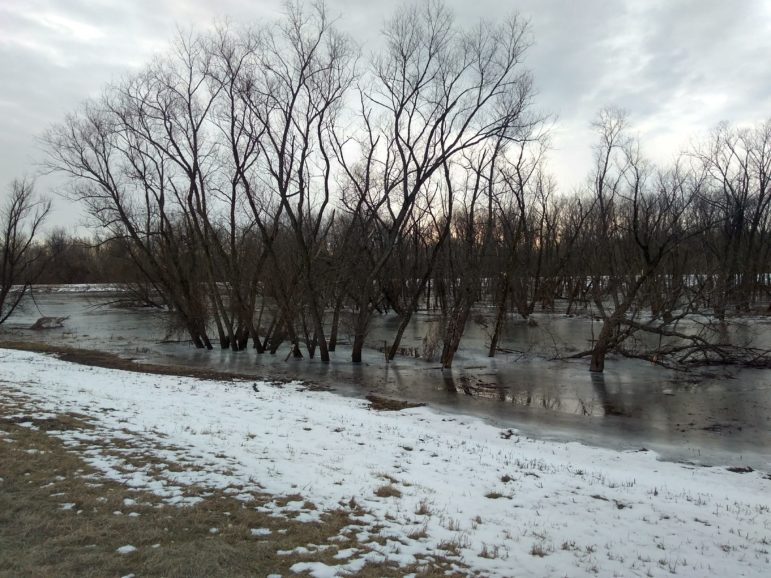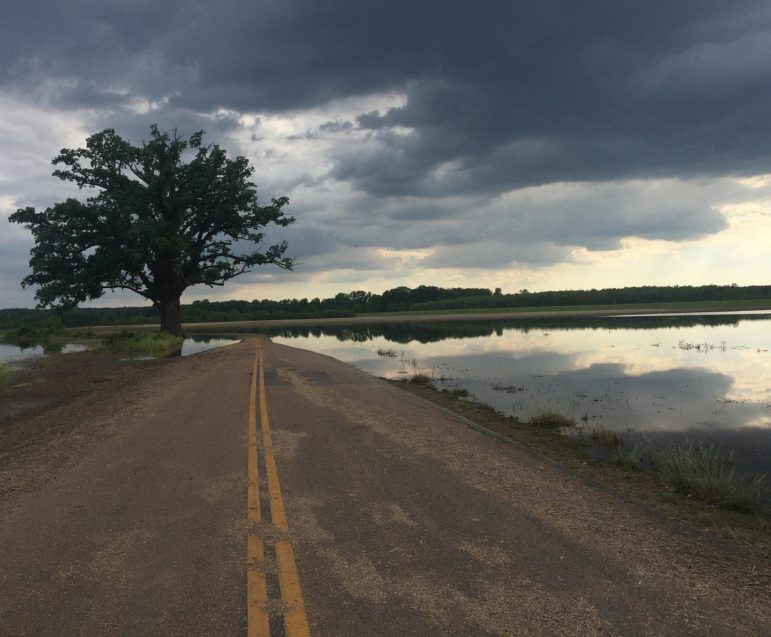
I have the fortune to live in a place where one can say, “I went down to the Big Oak Tree yesterday”, and expect that people will know which tree that is. In my case, the Big Oak Tree – capitalized, yes, for that is its proper name – sits along Burr Oak Road (named for the tree) in southern Boone County, Missouri, about twenty minutes by car from my home in Columbia. I could quote its various facts and figures – 90 feet tall, 130 foot spread, only matched in size by a single other bur oak in the United States – but the numbers would only be an attempt to quantify the numinous.
We see oak trees every day, here in the middle of the middle, and unless we have already built up a relationship with a specific tree, we tend to pass them by without remark. But the Big Oak Tree is special. It draws people to it, even people who are not, like us, especially inclined to worship the earth. It is holy of itself, and even the most base and materialist among us cannot help but admire the way its roots and branches stretch out across the sunset sky.

The Big Oak Tree, Boone County, Missouri (E. Scott)
I myself first encountered the Big Oak Tree while on another plane of existence, of sorts: I had gone to the Red Cross to give my quarterly donation of red blood cells, and as I sat down in the chair, a young woman appeared with a set of virtual reality goggles. She said she was conducting research on anxiety levels in blood donors, and had me fill out a short questionnaire about my mood. (As I recall, I said I felt fine except for being tired from a long week at work.)
Then she fitted me with the goggles, and I found myself staring at the trunk of an enormous bur oak tree. The ground surrounding it was muddy and tire-worn, and the tree itself was covered in graffiti and litter. I could turn my head from side to side, up and down, and the lenses tracked with my field of vision. A feminine voice, pleasant and unhurried, whispered a monologue into the small bones of my ear. Over the course of a few minutes, the trash disappeared, the spraypaint lifted, the earth repaired itself. By the end, the Big Oak Tree had been rejuvenated, its vast greenness swaying in the light of a sun I could not turn my head to see.
(The researcher gave me the questionnaire again. I think my answers were mostly the same, although I mentioned that I did like looking at the tree.)
I visited the tree in person a few days later. It was January, and it never felt like the sun properly rose. I followed roads of mud-ice and brown slush down to the site of the tree. Even in its midwinter torpor, the tree’s majesty washed over me. This magnificent creature had put roots into the earth before Cromwell dissolved parliament. I walked around it in a lazy perambulation, rubbing its rough bark beneath my wind-chilled fingers. In the time since they had filmed the video, someone had returned with a spray can; in red lines they had traced the letters RIP TRILL CHIB.
It was not what I would have wished done to the tree, but I understood the impulse. I have also felt the compulsion to make holy places my own, to leave my own mark of passing. Even as I passed the memorial, I found myself wondering if I could get away with holding a blót to Thor beneath the tree’s branches on some summer night to come, whether I could keep it secret, whether I could make it my own.

Eagle Bluffs Wildlife Conservation Area, Boone County, Missouri (E. Scott)
Instead of turning back toward Columbia, I went further along Bur Oak Road and found myself in a conservation area. I didn’t see much in the way of wildlife, except for a single great blue heron standing at the edge of a pond, but I did see many fascinating things – in particular, the stands of trees growing up out of the water, their roots covered in a thin and soggy layer of ice. I stopped for pictures: trees growing up from the water instead of the earth. Then I turned home and thought nothing more of it.
That is, until yesterday, when this video began making its way through the news feeds of people in Columbia:
I watched that video for a long time, ignoring the cheerful John Denver muzak, focusing instead on the image of the Big Oak Tree rising from the depths, as though its roots had been planted at the bottom of a lake. The field I had stood in the January before, which had stretched out toward the horizon, was now all submerged under water that the footage rendered as a serene, sea-like blue.
The whole state of Missouri seems to be underwater at the moment. The rivers that are the basis of life in this region have long overflowed their banks, brought on at least in part by the sudden shift from persistent cold to summertime heat with no gradual spring thaw between the two extremes. To that, add that this has been the wettest twelve month period since we started keeping records.
The temptation is to say that this is just what it means to live by the great rivers. In return for their years of plenty, sometimes they come to claim tribute, and they take it in grain, in brick, in livestock, in blood. The rivers flooded in 1993, 1973, 1951, 1927, and many more besides; sometimes that’s a thing rivers do. But we are wiser than that, I hope. We have spent a century trying to mold the earth to our whim, allowing those of us in the industrialized countries to pay as little heed to seasons as possible; the result, it seems, is that the seasons have become all the more dire, as if to remind us that they will not be so easily forgotten.

The Big Oak Tree, submerged, on June 8 2019 (E. Scott)
I am a person who spends a lot of his time thinking about relationships with spirits. When speaking of land-spirits, I always make the point that there is no difference between the spirit of a tree and the tree itself – they are one and the same, and the only proper way to pay respect to the spirit is to take care of the tree. I have always loved the spirits of the oak, who lived in the yard outside of my parents’ house when I was young, and who grow in the vé at Camp Gaea, and who grow so tall along Bur Oak Road in Boone County. I have always heard their voices as patient and understanding and firm – good listeners and good advisors.
As I look at the Big Oak Tree now, submerged beneath the waters in a field that should by rights be full of corn, I hear that same voice, but the patience is gone, replaced by an implacable urgency. What will you do with this? I hear the spirit saying. What will you make of this?
(Note: The final photograph in this column has been updated to reflect the current appearance of the Big Oak Tree.)
The Wild Hunt is not responsible for links to external content.
To join a conversation on this post:
Visit our The Wild Hunt subreddit! Point your favorite browser to https://www.reddit.com/r/The_Wild_Hunt_News/, then click “JOIN”. Make sure to click the bell, too, to be notified of new articles posted to our subreddit.
